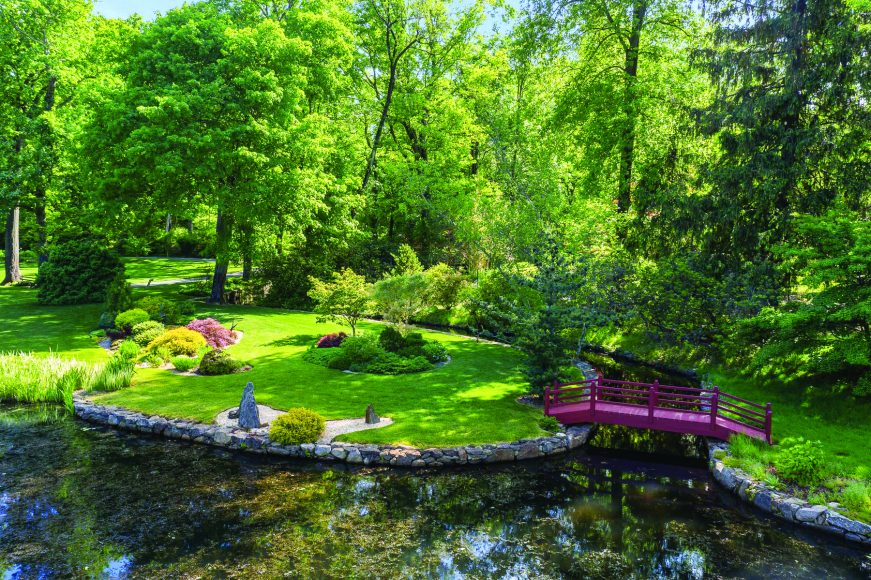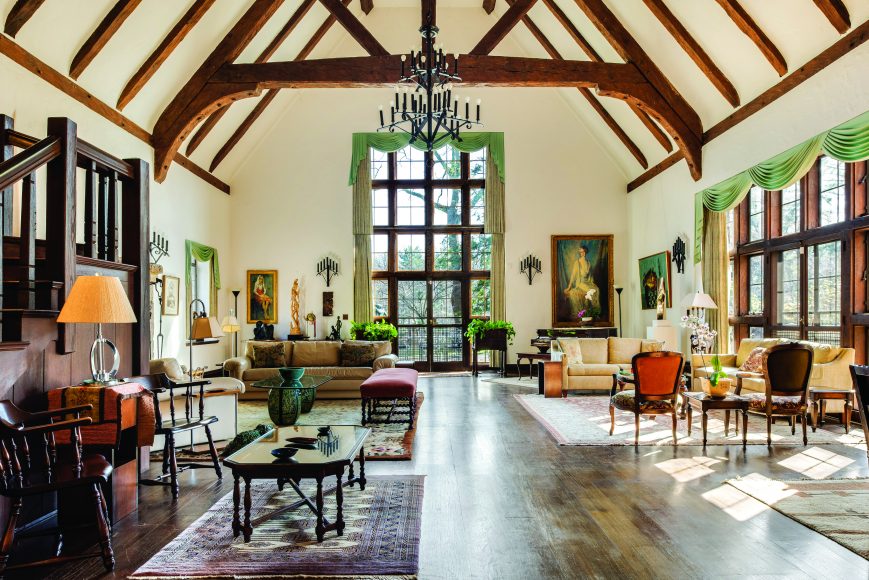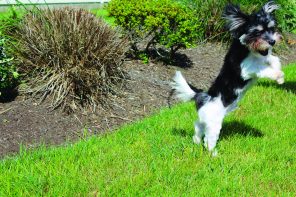It is a place that allows you immediately and continuously to exhale, offering refreshment for mind, body and spirit.
The Japanese garden is not like our traditional Occidental gardens. Where we might seek a profusion of greenery and a riot of color — carefully manicured, of course — with follies and ornamental sculpture in the grander designs, the elegantly spare Japanese garden draws on the basic elements of water, rock and sand, with curated flowers, trees and structures that speak to Buddhist teachings and a sense of the eternal.
Among the best-known public Japanese-style gardens in our area is the one found at Kykuit, the historic Rockefeller family home in Pocantico Hills. Created over two years (1908-10) by architect William Welles Bosworth — who also did the Massachusetts Institute of Technology’s Cambridge campus and the AT&T building in Manhattan — Kykuit’s Japanese Garden originally featured a brook spanned by two wooden bridges that fed a pond bordered by massive boulders and a mahogany teahouse nestled in a grove of blue spruces. In the 1960s, then- Gov. Nelson Rockefeller, Kykuit’s last owner, had landscape architect David Harris Engel expand and renovate the site to include a new teahouse; stone paths, ornaments, lanterns and a bridge; dramatic water effects; an area of raked sand; a bamboo grove; and plantings of cherry trees, azaleas and moss, all traditional to a Japanese garden.
Farther up the Hudson River in Ossining you’ll find the former Michael Bakwin estate, which is now on the market. Bakwin, who passed away in December, was a supporter of the New York Botanical Garden (NYBG), Brooklyn Botanic Garden and others. So it comes as no surprise that the 20-acre property is best-known for its gardens, including Japanese-style plantings and rock gardens, significant perennials, native and pond-side botanicals, sculptures and flowering trees and plants in various hues. There’s also an orchard fringed by vegetable and berry gardens. Horticulture enthusiasts have frequently sought out the private gardens for themselves, including Westchester County-based landscape designer Jan Johnsen, a NYBG instructor and student of the serene aspects of Japanese gardens, who wrote about the Bakwin property as a contributing editor of Garden Design magazine.
The gardens are rivaled by a nearly 9,500 square-foot Tudor-style mansion, which Bakwin’s parents built on a high point overlooking the gardens. Highlights of the home include a great room with a fireplace, a 40-foot vaulted, oak-beamed ceiling and towering glass doors as well as 11 bedrooms, a stately oak library and multiple dining areas.
A cobbled drive with stones salvaged from old Bronx streets leads up to the estate, which also has a lake with a boathouse as well as a pool, a tennis court and a guesthouse.
The estate is, it would seem, a perfect marriage of East and West.






